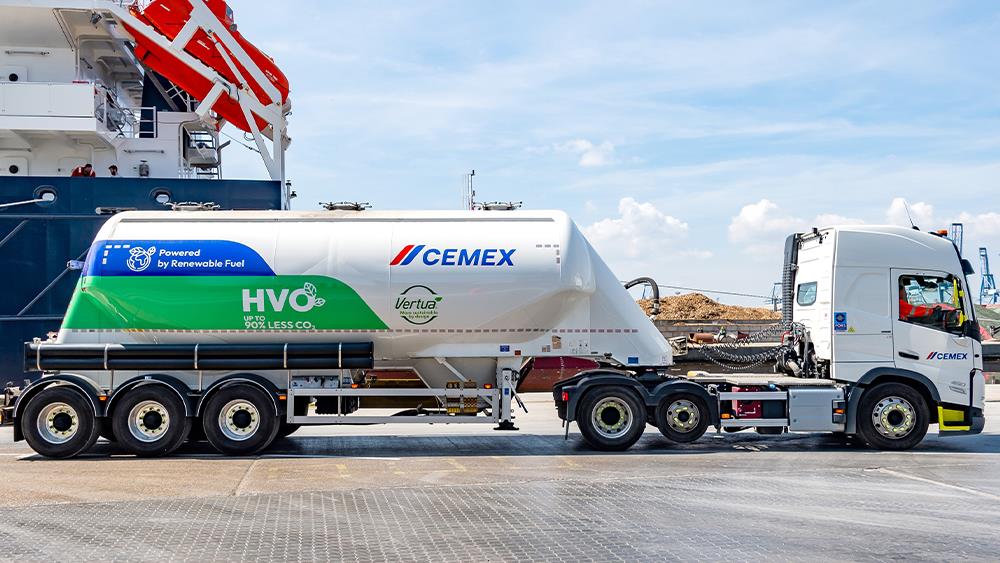

Cemex has unveiled its first ever HVO vehicle in support of its Future in Action programme.
Hydrotreated Vegetable Oil (HVO) is a diesel-like biofuel that can be produced without fossil resources by processing renewable waste. HVO is now one of the leading alternative renewable fuels available to the construction industry, producing up to 90% less CO2 emissions than traditional diesel fuel; and will act as a transitional fuel, helping to lower CO2 emissions while the industry moves towards more longer-term solutions, such as electric or hydrogen power.
The vehicle will be operating out of Cemex’s Tilbury cement plant, which sits on the River Thames, serves the London and South East building and construction markets, and has already achieved the ISO14001 environmental accreditation.
Cemex aims to lead the industry in its approach to creating a more sustainable future through its Future in Action programme, which sets out a combined approach to tackling climate change by reducing carbon emissions, introducing circularity into its operations, and increasing biodiversity.
Alongside its continued progress to decarbonise operations in order to reach net zero by 2050, Cemex also promotes innovative approaches to creating lower carbon building and construction materials through its Vertua range, increasing biodiversity through restoration work at its quarry locations, and finding ways to reduce carbon emissions across its supply chain through increased of rail freight, and the use of alternative fuels such as HVO.
Dave Hart, Director of Supply Chain for the UK, said: “The introduction of the new HVO-powered vehicle at our Tilbury plant is another important step on our journey towards reducing carbon emissions within our HGV fleet.
“Electric and hydrogen powered alternatives are either still in development or do not yet have the range or the infrastructure to be supported across our larger vehicle fleet.
“HVO biofuel therefore, provides us with the opportunity for us to reduce carbon emissions, acting as a transitional fuel, whilst we continue to assess other emerging technologies such as electric and hydrogen power.”